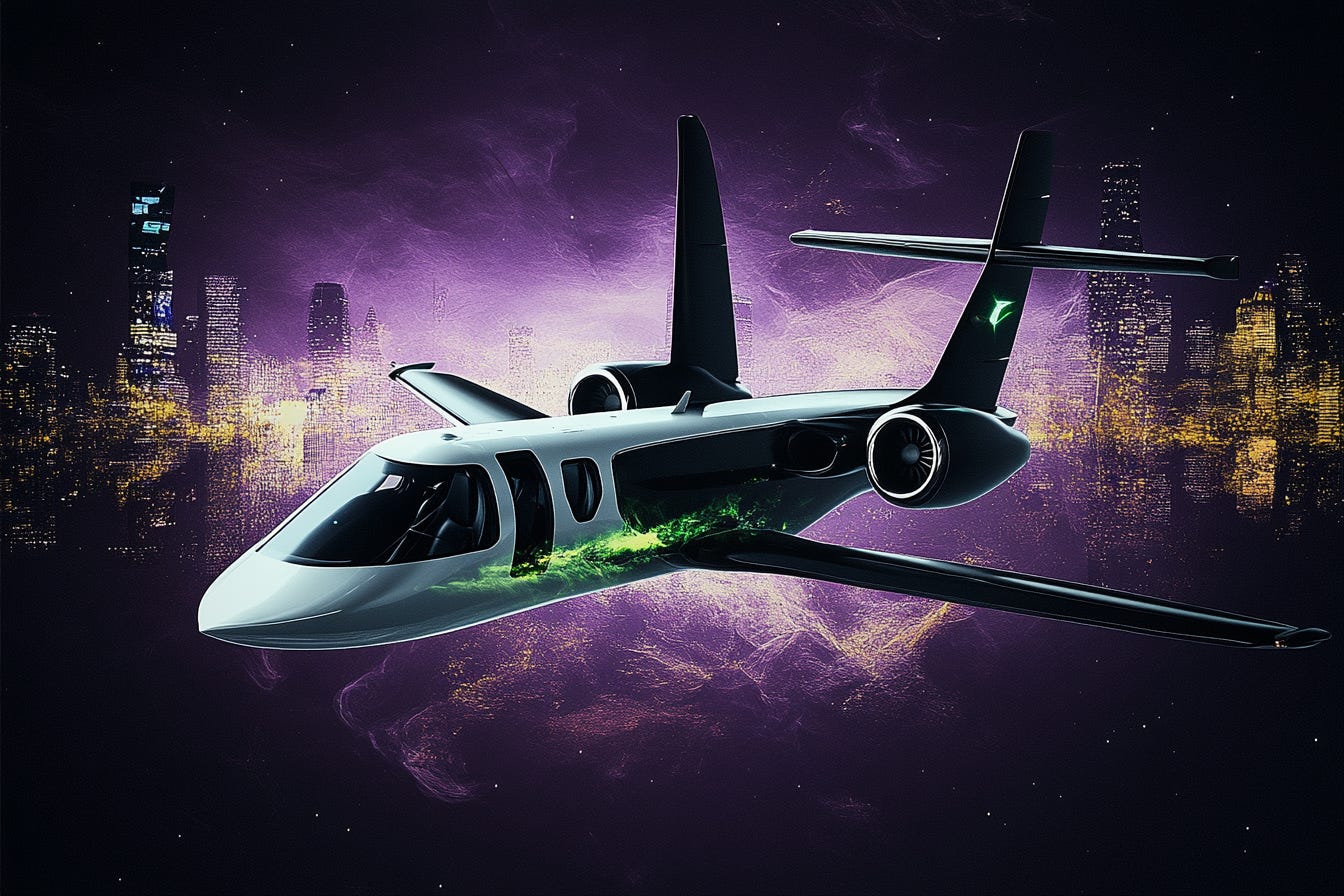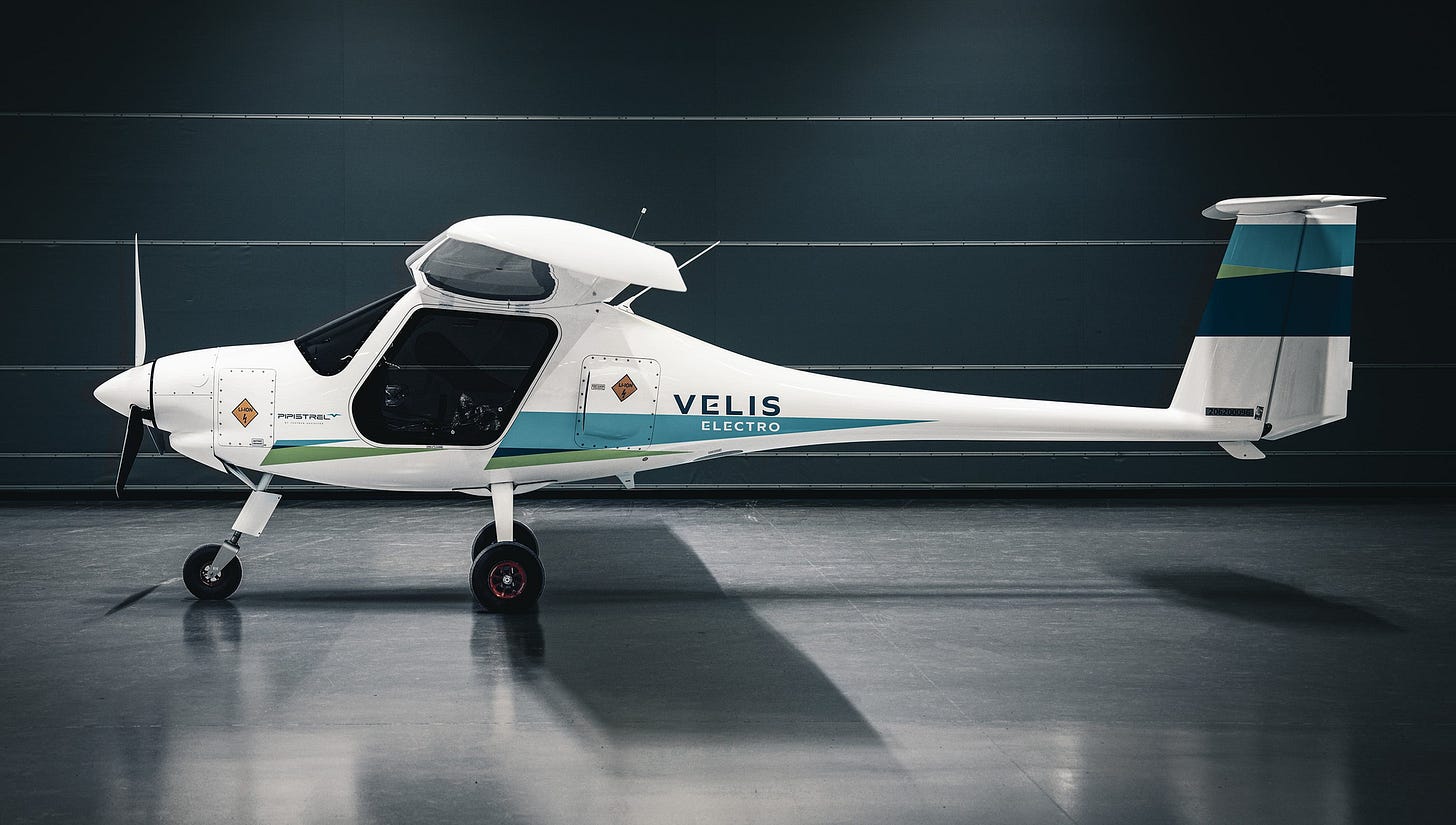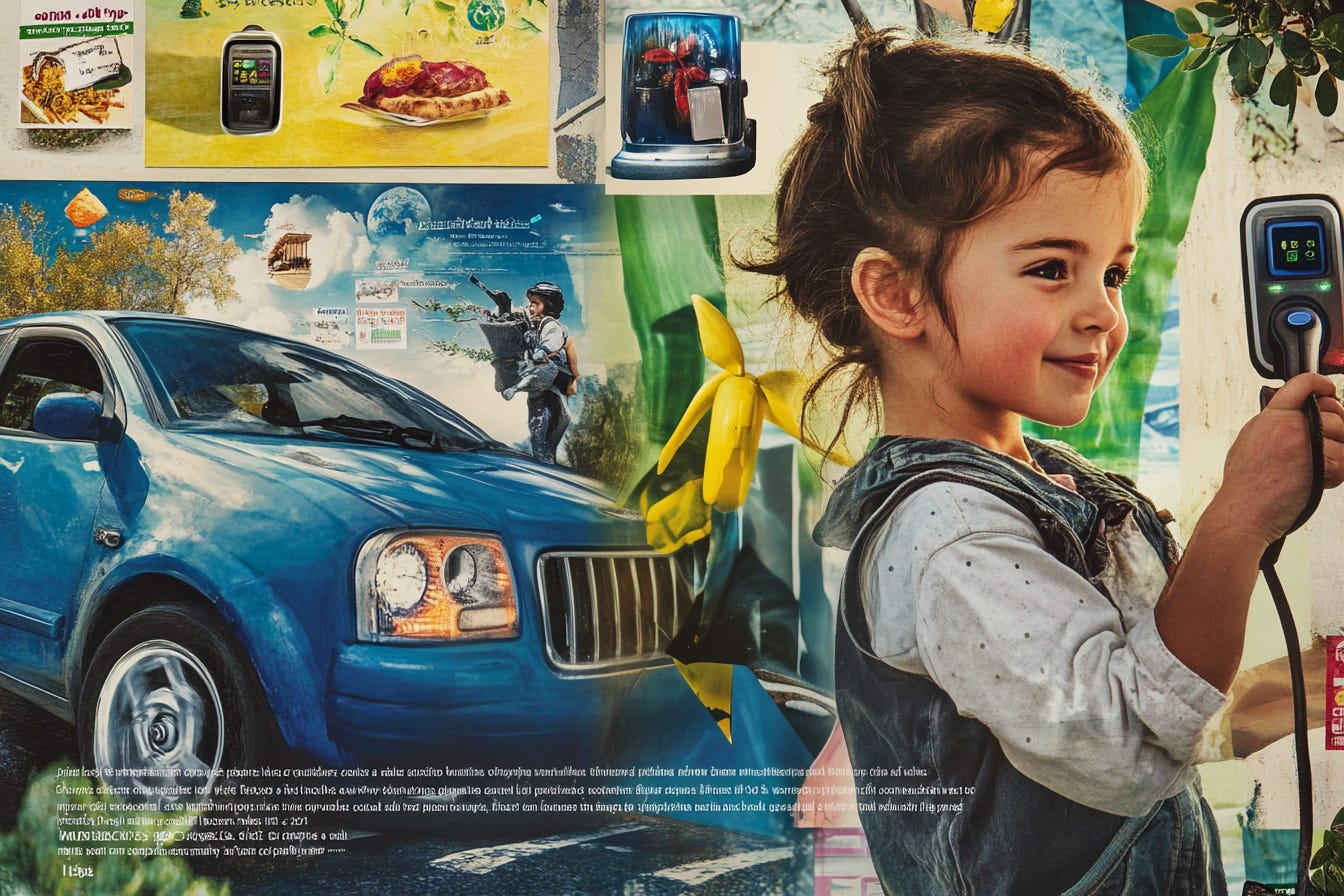Zero-Emission Air Travel
Europe's first electric international flights have taken to the skies, marking a pivotal moment in aviation history. Find out how the Uranus-Pluto world transit is influencing this and other emerging innovations in sustainability.

Imagine boarding a plane, knowing that your journey will leave no carbon footprint.
This isn't a scene from a distant future - it's happening now.
Europe's first electric international flights have taken to the skies, marking a pivotal moment in aviation history. This groundbreaking achievement isn't just about cleaner air; it's a symbol of human ingenuity and our collective commitment to preserving our planet.
In this article, we'll explore the revolutionary Electrifly project, delve into the planetary influences shaping our environmental consciousness, trace the roots of the modern environmental movement, and examine how these developments are transforming industries and opening new opportunities.
The Electrifly Project: Pioneering Zero-Emission Aviation
At the heart of this aviation revolution is the Electrifly project, a collaborative initiative demonstrating the viability of zero-emission flights between airports in the Netherlands, Belgium, and Germany.
But what exactly does this entail?
The project utilizes the Pipistrel Alpha Electro, a two-seat electric aircraft with a range of about 100 km. While this may seem limited, it's a crucial stepping stone towards larger electric aircraft. The plane's electric motor produces zero emissions during flight and operates with significantly reduced noise levels compared to traditional aircraft.

One of the main challenges facing electric aviation is battery technology. Current batteries are heavy and have limited energy density compared to jet fuel. The Electrifly project is addressing this by focusing on short-haul flights and developing more efficient charging infrastructure at participating airports.
Dr. Elena Rodriguez, lead engineer at Aachen University of Applied Sciences, explains: "We're not just proving that electric flight is possible; we're creating a blueprint for sustainable regional air travel. Every flight teaches us something new about optimizing energy use, improving battery life, and enhancing overall performance."
The involvement of NIO, a Chinese electric car company, adds another layer of innovation. By providing electric ground transportation within a 15-kilometer radius of the airports, the project is creating a holistic, zero-emission travel experience.
Resonance with Planetary Archetypes
Astrology offers a unique perspective on the forces shaping our collective consciousness and technological progress. The Uranus-Pluto trine (2021-2032) is particularly relevant. Uranus represents sudden breakthroughs and revolutionary change, while Pluto symbolizes deep transformation. Together, they drive rapid technological advancements and profound social changes.
During Uranus-Pluto alignments, there is often a shift towards more sustainable and equitable systems. The Electrifly project embodies this dynamic, challenging the status quo of fossil fuel dependence and reshaping travel and its environmental impact. This alignment influences various sectors, from energy production and materials science to space exploration, all reflecting a broader shift towards sustainability.
Echoes from the Past: The Roots of Environmental Consciousness
The last major Uranus-Pluto alignment was a conjunction (0° orb) during the period of 1960-1972. A conjunction, where the planets appear to meet in the sky, often signals more intense and transformative energies than the current trine aspect we're experiencing. This alignment coincided with a period of radical social change, technological breakthroughs, and an awakening environmental consciousness.
Some key developments during this period include:
1962: Rachel Carson's "Silent Spring" raised awareness about pesticides, much like today's growing concern over aviation emissions.

1964: The Wilderness Act in the US protected federal lands, reflecting a desire to preserve nature that now extends to our skies through electric aviation.

1965: The Water Quality Act in the US marked a shift towards environmental regulation, similar to today's government support for sustainable technologies.

1968: The "Earthrise" photo from Apollo 8 fostered global environmental awareness, mirroring the worldwide effort to develop sustainable air travel.

1970: The first Earth Day mobilized millions, reminiscent of today's collective push for eco-friendly travel options.

These events sparked a revolution in how we view nature. Today's electric aviation represents a shift in how we approach travel and its environmental impact. The excitement around sustainable innovations today parallels the technological optimism of the Space Age.
Current Developments: A Global Sustainable Revolution
Today, as we experience the Uranus-Pluto trine (120° orb), we're witnessing a new wave of sustainable innovations across various sectors. This surge in eco-friendly technologies and practices reflects the Uranian spirit of breakthrough combined with Pluto's transformative power.
Aviation
The Electrifly project is at the forefront of this revolution, demonstrating the viability of electric flights for short-haul routes. Meanwhile, companies like Wright Electric are pushing the boundaries further, developing electric engines for larger commercial aircraft. Their goal is to make 100% electric flights on routes under 800 miles a reality by 2030. These advancements could dramatically reduce aviation's carbon footprint, which currently accounts for about 2% of global CO2 emissions.
Energy
Climeworks' direct air capture plant "Orca" in Iceland is now removing thousands of tons of CO2 from the atmosphere annually, offering a technological solution to combat climate change. On another front, Commonwealth Fusion Systems has achieved significant breakthroughs in fusion reactor technology, potentially unlocking a virtually limitless source of clean energy. These innovations could revolutionize our energy landscape, moving us away from fossil fuels towards a more sustainable future.

Materials
The quest for sustainable materials is yielding fascinating results. Notpla has developed seaweed-based packaging that's not only biodegradable but edible, offering a creative solution to the plastic waste crisis. In the sports industry, WNDR Alpine is producing high-performance skis using algae-based materials, demonstrating that sustainability doesn't have to compromise quality or performance.

Fashion
The fashion industry, long criticized for its environmental impact, is embracing innovation. Stella McCartney's Frayme Mylo bag, made from mycelium leather, represents a new frontier in sustainable luxury. This mushroom-based material offers a cruelty-free, lower-impact alternative to traditional leather, potentially transforming the accessories market.

Space Technology
Even as we look to solve problems on Earth, our vision extends to the stars. Orbital Assembly's plans for a sustainable space hotel incorporate cutting-edge recycling systems, solar power, and other eco-friendly technologies. This project not only pushes the boundaries of space tourism but also demonstrates how sustainability principles can be applied in the most challenging environments.

These innovations are just the beginning. Across every industry, we're seeing a shift towards more sustainable practices and technologies. From agriculture to transportation, energy production to consumer goods, the spirit of eco-innovation is taking hold. The challenge now is to scale these innovations, making them accessible and affordable for widespread adoption.
What This Means for Different Fields
The current push for sustainability opens up new chances for many areas:
For Creators and Designers:
Look to nature for ideas: Nature has solved many problems over millions of years. Copying these solutions can lead to better, more eco-friendly designs.
Use new tech to be more green: Adding things like smart sensors can make products use less energy and resources.
Tell stories about positive change: Show people how sustainable choices can make the world better.
For Innovators:
Work on better ways to store energy: As we use more solar and wind power, we need better ways to save this energy for later.
Use AI to save resources: Smart computer systems can find ways to use less energy and create less waste.
Apply green ideas across different industries: A solution for one problem might help solve issues in other areas too.
For Advertisers:
Show how small actions add up: Help people see how their choices can make a big difference when everyone joins in.
Paint a picture of a better future: Use ads to show people what a cleaner, greener world could look like.
Connect personal choices to global impact: Show how buying an electric car, for example, helps clean up the air for everyone.
For Entrepreneurs:
Combine new tech with green thinking: Use things like AI or 3D printing to create new eco-friendly products or services.
Look into areas like sustainable farming or clean energy: These fields are growing and need new ideas.
Use blockchain and AI for sustainability: These technologies can help track product sources and use resources more wisely.
For Investors:
Think long-term with green tech: Some of these new ideas might take time to pay off, but could be big winners in the future.
Look for game-changers: Find companies that are completely rethinking how things are done, not just making small improvements.
Pay attention to company ethics and practices: How a company treats the environment and people is becoming more important for its success.
In all these areas, it's important to think big and long-term. The current moment gives us a chance to imagine big changes and then work to make them real. By doing this, we can help create a better future for everyone
Charting a Course to a Sustainable Horizon
Zero-emission air travel represents a transformative shift in transportation and environmental responsibility. This development is part of a larger pattern of innovation and environmental awareness, resonating with planetary rhythms and decades of activism.
From creators to investors, everyone has a role in this transformation. Each electric flight and sustainable innovation brings us closer to harmonizing human progress with environmental stewardship. In this era of Uranus-Pluto trine, we have the potential to make unprecedented leaps in sustainable technology.
The sky is no longer the limit – it's our new frontier of sustainability.










